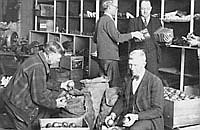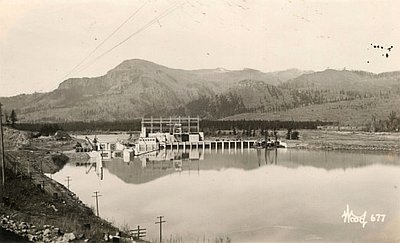Oregon’s Cultural Foundations
Nineteenth-century Oregonians had access to a wealth of newspapers and journals, many of which served as regional forums for political invective and to plead special causes. Beginning its brief tenure as a biweekly in 1846, the Oregon Spectator led the parade as the region’s first newspaper. The state’s two most enduring publications, the Portland Oregonian and the Salem Statesman, appeared in 1850. Generally, news articles were reprinted from the eastern press, and local news was unapologetic and crudely presented. With the professionalism of journalism toward the late nineteenth century, the Oregonian and the Statesman developed into solid regional newspapers, establishing a conservative ethos that reflected the state’s powerful vested interests.
Abigail Scott Duniway published the first issue of the New Northwest in 1871, was one of the best known of journals in Oregon at the end of the nineteenth century. After the New Northwest ceased publication in 1887, Duniway assumed editorship of its spiritual successor, The Pacific Empire. That effort morphed into the more literary Pacific Monthly in 1898, for several decades the Northwest’s most prominent literary magazine.
The Portland-based monthly West Shore, published from 1875 to 1891, was the most assertive and widely circulated booster journal in the region. The first illustrated magazine published in the Northwest, it focused on commercial and industrial development, especially building railroads into the interior of the Columbia Basin. Before long, the West Shore was being distributed in thirty-two states and in England.
Many Oregonians devoted energy and time to lyceums, debating societies, literary clubs, and discussion groups. Among the more popular public gatherings were those featuring “extemporaneous discussion,” with topics ranging from American foreign policy to temperance. History clubs, French and German clubs, and literary organizations held regular, well-attended meetings. The most memorable of the educational enterprises were the Chautauquas, organized educational events held around the state during the 1890s and featuring teachers, musicians, entertainers, and orations by national figures such as William Jennings Bryan.
From the beginning of white settlement in the region, there were hotel and social club reading rooms, where magazines and newspapers were made available to the public. The Oregon Territorial Act of 1848 included a provision for a territorial library with an appropriation to purchase books and legislative documents from the Eastern. The Multnomah County Library traces its origins to the private and exclusive Portland Library Association, which became free and open to the public in 1902.
In 1901, the Oregon legislature passed a measure to coordinate school and district libraries, and lawmakers established the State Library Commission in 1905 to facilitate the creation of new libraries and to set up traveling book collections. Before long, the commission reported that several small libraries had opened in communities around the state.
© William G. Robbins, 2002. Updated and revised by OE Staff, 2014.
Sections
Related Historical Records
Stark Street Library
In 1891, after 27 years of dedicated fund raising, the Library Association of Portland opened this two-story, solid stone building on Stark (now Harvey Milk), between SW 7th …

Advertising in Pacific Monthly, 1907
Shown here is a page of advertising from the September 1907 issue of Pacific Monthly, promoting investment in copper mining, “fortunes in fruit,” and plans for building suburban …

Chief Joseph
1840-1904 Chief Joseph was the leader of one band of the Nez Perce people (Nimi'ipuu). The Nez Perce resided in the plateaus, mountains and gorges of northeastern Oregon, …







